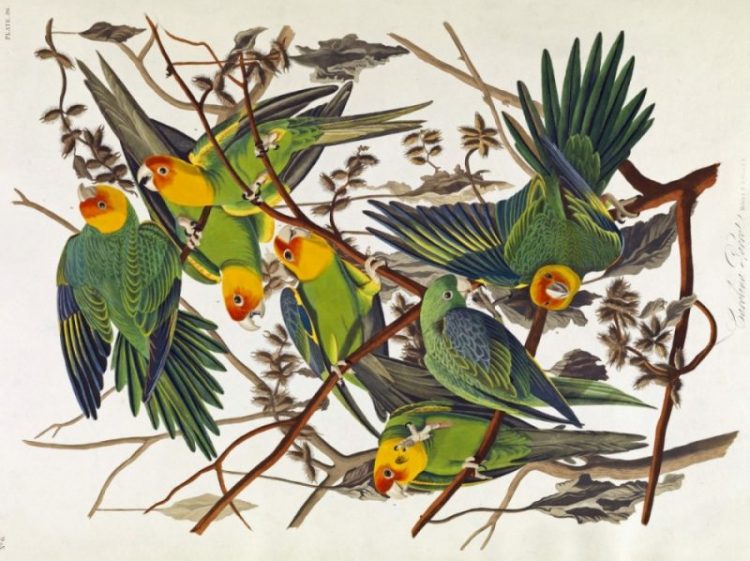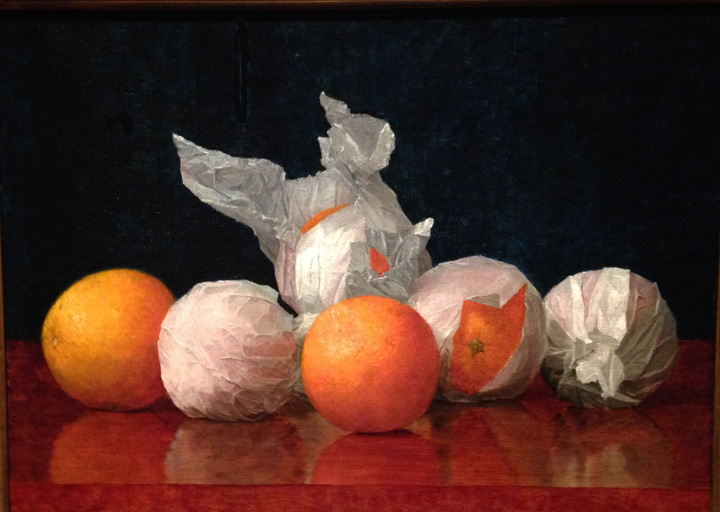
Audubon to Warhol: The Art of American Still Life. Philadelphia Museum of Art through January 2016.
The Art of American Still Life Audubon to Warhol. Edited by Mark D. Mitchell. Yale University Press, 2015.
When you think of Still Life as an art form, you usually think of fruit on a table. A major new exhibition at the Philadelphia Museum of Art discredits that over-simplification.
American Still Life is a distinctive genre, recognizably different from European because it depicted a broader array of everyday objects. The artists aimed to make the prosaic seem poetic. This exhibition reveals that much of the movement came from Philadelphia. The genre’s grand-daddy, literally, was Charles Willson Peale (1741-1827) a Philadelphia scientist, naturalist and painter who founded museums and sired generations of other painters.
Peale and Thomas Jefferson collaborated on inventing a device which produced copies of handwritten letters. As if Peale were returned from the grave and planning it, this exhibition shows many still lifes of mechanical objects and inventions.
The glory of still life is that it makes the prosaic seem poetic. Artists attempted to capture what people had in their homes, to give viewers a connection to life. You might say they captured stilled life.
In addition to Peale and his offspring, other Philadelphians included James Audubon, the trompe l’oeil illusionist William Michael Harnett, modernists Arthur Carles and Man Ray, the photographer and painter Charles Sheeler, and the Wyeth family.
Audubon was born in France in 1785 and moved to Pennsylvania, living in a town now named for him near Philadelphia. He collected birds and drew their pictures. The exhibition puts a spotlight on stuffed yellow-and-green Carolina parakeets from Audubon’s personal collection, and next to them is his famed etching called Carolina Parrot (about 1828). This was the only parrot species native to the eastern United States. The bird’s colorful feathers were in demand as decorations on ladies’ hats. The species is now extinct.
In the prosperous years in the second half of the 19th century, many artists depicted overflowing signs of affluence. The most vivid is Andrew J. H. Way’s Oysters in Half Shell (1863) where the oysters’ glistening texture jumps out at you.
A small and simple oil that impresses is Wrapped Oranges by William McCloskey (1889), where the succulence of the oranges’s skins enticed this viewer.
This is a particularly personal exhibit. Your favorite moments will depend on what you treasure in your own life. The exhibition depicts our culture in contextual settings, such as a re-creation of the interior of Stewart’s Saloon, established 1876 in lower Manhattan. After the Hunt by William Harnett hung there for many years, and it’s in this show.
Keep an eye out for the amazing painting Mr. Huling’s Rack by Harnett. Created in 1888, it foretells modern design with its small pieces of household ephemera arranged geometrically.
The 20th century saw artists illustrating technological advances. In a demonstration of that, photographs and motion pictures of locomotives flank a painting of the wheels and gears of a train, Rolling Power (1939) by Charles Sheeler.
Gerald Murphy collected pocket watches, several of which are on display, and these intimate gadgets inspired a huge oil by him, seven foot square, in 1925 called simply Watch.
Finally comes a room with the familiar depiction of familiar objects by Jasper Johns, Roy Lichtenstein and Andy Warhol (his Brillo boxes.)
This is a varied and compelling array, and it was imaginatively curated by Mark D. Mitchell, the departing associate curator of American art at the Philadelphia Museum of Art. He has been hired to head the modern art department at Yale University.
Wrapped Oranges by William McCloskey:

Watch by Gerald Murphy:
Read other reviews on The Cultural Critic